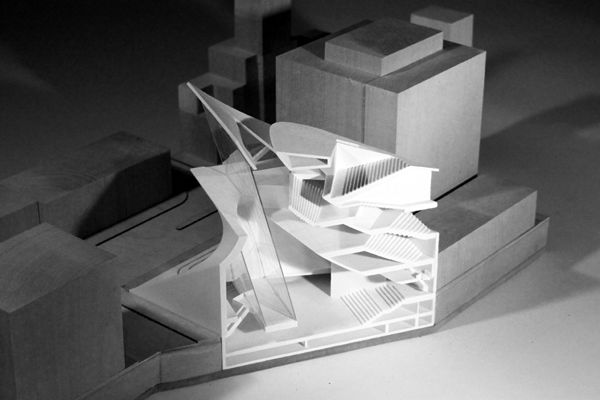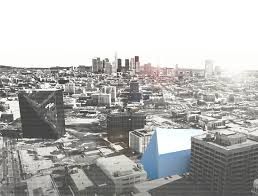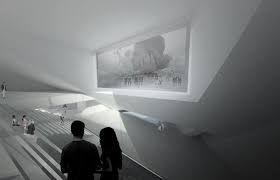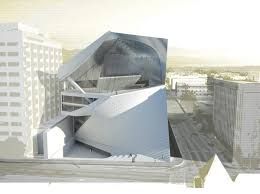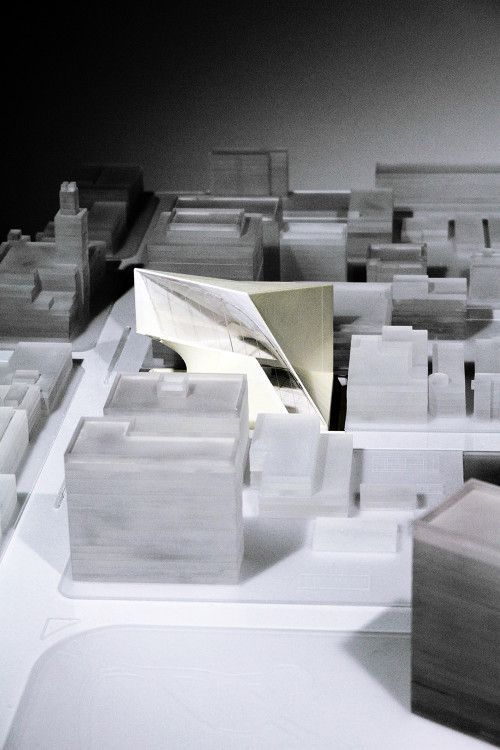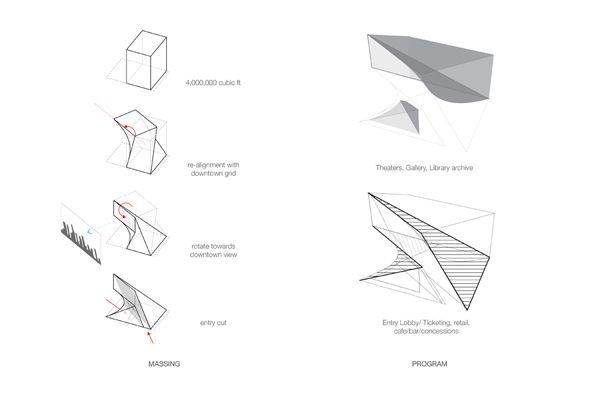The design for a centre for contemporary cinema situated near the periphery of Downtown LA along Wilshire Boulevard is a 2012 award winning studio project of Amir Mikhaeil at Yale University School of architecture. From the architects description of the project one can conclude that he took great inspiration from the works of Tarkovsky on time in cinema and Deleuze on the time-image. The massing of the cinema turns at that intersection of the Wilshire Boulevard and the Virgil Avenue realigning itself to face downtown LA whiles creating a cascading atrium bounded by two hyperbolic surfaces.
The massing of the cinema turns at that intersection of the Wilshire Boulevard and the Virgil Avenue realigning itself to face downtown LA whiles creating a cascading atrium bounded by two hyperbolic surfaces.
Composed of two primary theatre blocks, the smaller block contains a single theatre facing inward whiles the larger contains four theatres with the largest at the top facing the city through a proscenium. The architect describes fully the project in the following words:
The architect describes fully the project in the following words:
“From the street the multiple figures, lights, shadows, and images collapsed onto one another will be visible as a flickering image that announces the Cinema Centre’s presence and activities. Visitors can enter the building by descending down one level of steps from Wilshire Boulevard or by crossing a bridge over the sunken lobby from Virgil Avenue.
The lobby level which acts as the central primary event space of the building and the atrium is sliced by two parallel and canted planes of glass which reach from the top of the building and land at the bridge which cuts across from Virgil Avenue. This alley of outdoor space brought into the centre of the building can be projected onto from both the lobby amphitheatre and the smaller theatre block and is visible from all spaces adjoining the atrium. Once visitors make their way up the lobby amphitheatre they follow a diagonal path of circulation along the side of the building connecting various theatre, gallery and library archive levels. This path culminates at a great urban room on the upper terrace/ cafe-restaurant level which overlooks downtown, the pinnacle of the internal atrium, as well as film projecting from the upper level theatre. All the while the great overhead swooping aluminium-clad ceiling (the upper surface area of the hyperbolic geometry) reflects and mirrors both the internal activities in the atrium to the street as well as the street life into the atrium spaces.”
This path culminates at a great urban room on the upper terrace/ cafe-restaurant level which overlooks downtown, the pinnacle of the internal atrium, as well as film projecting from the upper level theatre. All the while the great overhead swooping aluminium-clad ceiling (the upper surface area of the hyperbolic geometry) reflects and mirrors both the internal activities in the atrium to the street as well as the street life into the atrium spaces.”
The project won the 2012 H.I. Feldman Prize of Yale Architecture School.
By Hassan Mohammed Yakubu
Courtesy of Amir Mikhaeil


